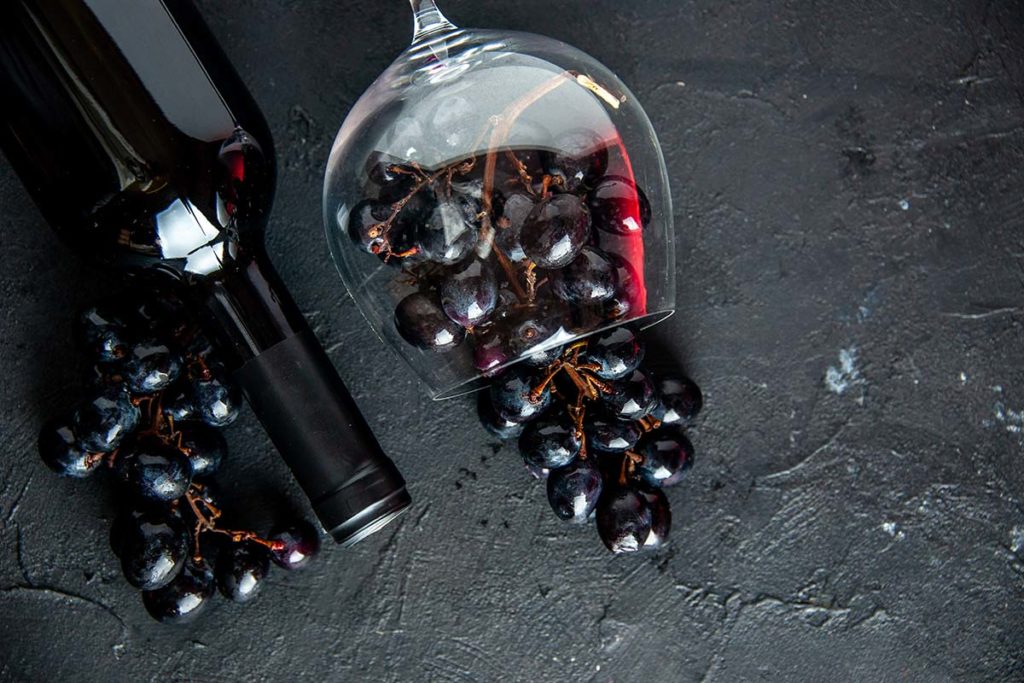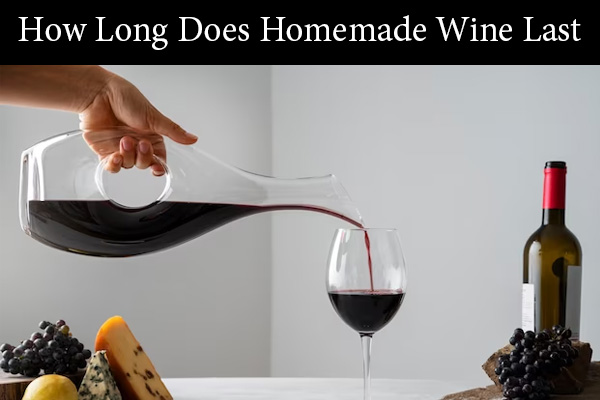Are you a budding winemaker or have you recently crafted your own batch of homemade wine? Congratulations on your delightful creation, but don’t let your time and effort go to waste by having your wine go bad.
As you revel in the joy of your winemaking success, a pertinent question arises: How long does homemade wine last?
Whether you’re a novice enthusiast or a seasoned connoisseur, understanding the lifespan of your homemade wine is crucial for ensuring its quality and enjoyment over time. In this article, we’ll delve into the factors that influence the longevity of homemade wine and provide you with valuable insights on how to make the most of your treasured bottles. So, grab a glass, sit back, and let’s explore the intriguing journey of how long homemade wine can last.

How Long Does Natural Wine Last
The longevity of homemade wine can vary depending on several factors, including the specific type of wine, the winemaking process, storage conditions, and the presence of preservatives. In general, well-made homemade wines can be enjoyed for a few years, and some varieties can even age gracefully for several decades. However, it’s important to note that most homemade wines are best consumed within the first few years of bottling.
The aging potential of homemade wine can be influenced by its inherent characteristics, such as acidity, tannins, sugar content, and alcohol level. Certain wines, like robust reds and full-bodied whites, tend to have a higher capacity for aging compared to lighter and fruit-forward (like our blackberry wine recipe) wines. Additionally, wines with higher alcohol levels and tannic structure have a better chance of developing complexity and depth over time.
It’s worth noting that not all homemade wines are designed for long-term aging. Some wines, like fresh and fruity white wines or lighter reds, are intended to be enjoyed in their youthful and vibrant state. These wines are best consumed within the first year or two after bottling to fully appreciate their fresh flavors and aromas.
How to Store Homemade Wine
Proper storage conditions play a crucial role in preserving the quality of homemade wine. And knowing how to store homemade wine is crucial to making your homemade wine last a long time. Ideally, wines should be stored in a cool, dark, and humidity-controlled environment. Temperature fluctuations, excessive light exposure, and improper humidity levels can accelerate the aging process and lead to premature deterioration.
Storing homemade wine properly is essential to maintain its quality and preserve its flavors over time.
Guidelines to Store Homemade Wine Effectively
- Temperature: Wine should be stored at a consistent temperature between 45°F (7°C) and 65°F (18°C). Avoid significant temperature fluctuations, as they can cause the wine to expand and contract, potentially damaging the cork and affecting the overall quality. Aim for a cool and stable environment.
- Darkness: Protect your wine from direct sunlight or UV rays, as they can cause chemical reactions and prematurely age the wine. Store your bottles in a dark or dimly lit area, such as a cellar, wine cabinet, or closet.
- Humidity: Maintain a moderate level of humidity, ideally between 50% and 80%. This helps keep the cork moist and prevents it from drying out, which could lead to air seepage and oxidation. If the air is too dry, consider using a humidifier or placing a shallow dish of water in the storage area.
- Orientation: Store wine bottles horizontally or at a slight angle. This allows the wine to stay in contact with the cork, keeping it moist and preventing it from drying out. However, if you have alternative closures like screw caps or synthetic corks, orientation is not necessary.
- Stability: Keep the wine bottles undisturbed and avoid excessive movement or vibration. Vibrations can disturb the sediment in aged wines or disrupt the wine’s natural aging process.
- Odor Control: Prevent exposure to strong odors that can permeate the wine, as wine is sensitive to absorbing surrounding aromas. Avoid storing wine near chemicals, cleaning products, or strong-smelling substances.
- Air Circulation: Ensure adequate air circulation in the storage area to prevent the buildup of musty odors or mold. However, avoid excessive drafts that can accelerate the aging process.
- Long-Term Aging: If you plan to age your homemade wine for an extended period, consider investing in a wine cellar or wine refrigerator with precise temperature and humidity controls. These specialized storage units provide optimal conditions for aging wines.
By following these storage guidelines, you can maintain the quality, flavors, and aromas of your homemade wine, allowing you to enjoy it at its best for an extended period. Cheers to the delight of well-preserved homemade wine!
How to Tell if Wine is Bad
Determining whether wine has gone bad or spoiled can be done by examining its appearance, aroma, and taste. It’s important to note that not all changes in wine are necessarily signs that the wine is bad or has spoiled.
Some wines naturally evolve and develop complex flavors with age, while others may have unique characteristics from the winemaking process or grape varietal. However, if the wine exhibits multiple indicators of spoilage, it’s best to err on the side of caution and refrain from consuming it.
Indicators to Identify if Wine is Bad and No Longer Suitable for Consumption
- Appearance: Look for any noticeable changes in color or clarity. While red wines tend to darken with age, significant browning or an orange hue can indicate oxidation. White wines may develop a darker yellow or amber color. Cloudiness, sediment, or fizzy bubbles in still wines can also be signs of spoilage.
- Aroma: Wine should have a pleasant and inviting aroma. If you detect any off-putting or unusual smells, it may indicate spoilage. Common faults include a vinegar-like aroma (indicating acetic acid), a musty or moldy smell (suggesting cork taint or microbial spoilage), or a sulfur-like smell (pointing to excess sulfur dioxide).
- Taste: Trust your palate when assessing the taste of wine. Spoiled wine often has noticeable faults. It may taste overly acidic, vinegary, or excessively sweet. Any unpleasant or off flavors, such as a rancid or moldy taste, can indicate spoilage.
Remember, everyone’s sensory perception varies, so if you’re unsure about the quality of a wine, it’s always a good idea to consult with a knowledgeable wine professional or sommelier who can provide further guidance.
Ultimately, trust your senses and personal judgment when determining if wine has gone bad. It’s better to be cautious and enjoy wines that are fresh, vibrant, and free from noticeable faults.
Summary
Answering the question of how long does homemade wine last has a lot of considerations that need to be taken into account. The lifespan of homemade wine can vary depending on various factors such as the type of wine, winemaking process, storage conditions, and the presence of preservatives.
Generally, well-made homemade wines can be enjoyed for a few years, while some varieties can age gracefully for several decades. Proper storage is crucial to maintain the quality and flavors of homemade wine over time.
Knowing how to store homemade wine is a key factor in making your wine last a long time. When it comes to storing homemade wine, key considerations include temperature, darkness, humidity, stability, odor control, and air circulation. By keeping the wine at a consistent temperature, protecting it from light exposure, maintaining suitable humidity levels, and storing it undisturbed, you can help preserve its quality and prevent premature aging.
By understanding the factors influencing the lifespan of homemade wine, implementing proper storage practices, and recognizing signs of spoilage, you can maximize the enjoyment of your homemade creations. So, raise a glass to the art of winemaking, savor your well-preserved bottles, and relish the pleasure of sharing homemade wine with friends and loved ones. Cheers to the wonderful world of homemade wine!

